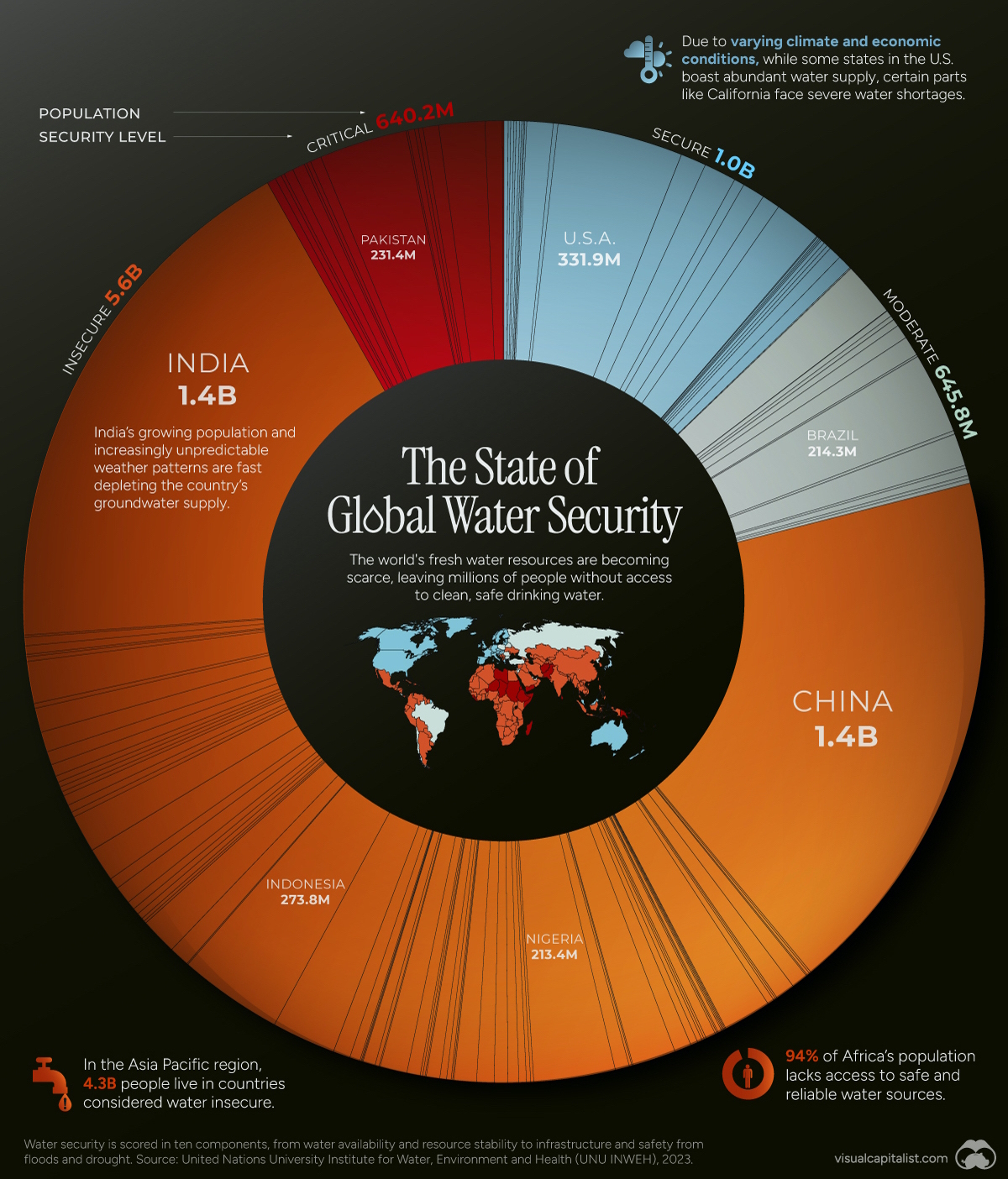BLOG
August 11th, 2023
Courtesy of the Visual Capitalist, an insightful graphical visualization of the global population by water security levels:

Visualizing the Global Population by Water Security Levels
Most of the world’s population today lives in countries facing critical water security issues.
Dealing with issues such as declining freshwater availability, demand from growing populations, insufficient infrastructure, or flawed water governance can impact how easily a country’s population can access water. A combination of multiple factors quickly makes problems with water security a lived reality.
A recent Global Water Security Report by the United Nations University assessed the water security of different countries across the world.
MethodologyThis study assesses water security in countries by examining 10 different underlying components, ranging from water quality and sanitation to availability, resource stability, and climate-related risks.
Each component is given a score out of 10, with a nation’s overall water security score calculated from the sum. Water security levels are assigned based on the overall scores:
- 75 and above is classified as “water secure”
- 65?74 is classified as “moderately secure”
- 41?64 indicates a country is “water insecure”
- 40 and below is considered “critically insecure”
Water Security Levels by Country
Water security remains a concern around the world, but is especially dire in regions like the Middle East and Africa, where 13 of the 23 nations in the critically insecure category are located.
In total, 113 countries are considered water insecure, including the world’s two most populated, India and China. An additional 24 countries are considered critically water insecure, with the largest by population including Pakistan and Ethiopia
Countries facing water security issues account for 72% of the world’s population, with an additional 8% of the global population facing critical water insecurity.That includes 4.3 billion people in the Asia-Pacific region alone, and an additional 1.3 billion people across Africa. Many of these countries are grappling with issues including fast-growing populations and drought conditions faster than they can develop the necessary infrastructure to deal with them.
Only 12% of the world’s population lives in water-secure countries, including almost all Western countries, with Norway at the very top of the rankings at an overall score of 90. An additional 8% of the world lives in moderately secure countries such as Brazil and Russia.
However, water availability in these more secure countries is not perfect either. For example, U.S. states reliant on the Colorado River for irrigation and drinking water are facing continued drought conditions and limiting consumption, with further crisis on the horizon.
Towards a Water Secure Future
As nations around the world face increasing water-related challenges, governments and international agencies have been collaborating to foster sustainable water management practices. In fact, clean water and sanitation for all is one of the UN’s Sustainable Development Goals (SDGs).
Many regions have already begun to implement these practices. For example, cities in California have begun recycling wastewater and capturing stormwater to deal with water scarcity. Farming-dependent regions are also looking to smart agriculture to reduce the drain on the limited freshwater resources.
Such initiatives to improve water irrigation systems, enhance water infrastructure, and conserve the depleting freshwater reserves may help elevate countries out of water insecurity and help preserve this precious resource for generations to come.

